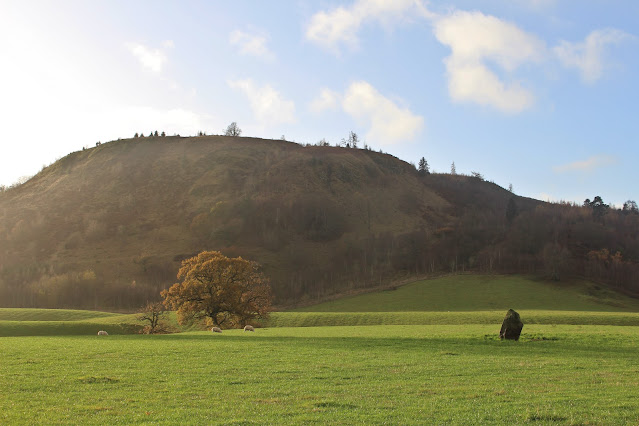A walk to Skirley Craig hillfort

The other day, I walked up to Skirley Craig hillfort on the boundary of the Scottish highlands, to the north of Crieff. Crieff is a small town in Strathearn, located on a hill overlooking the valley. Just to the north of the town is the Knock of Crieff, which is Gaelic for the hill of Crieff. The name Crieff is derived from the Gaelic, Craoibh, which means ‘tree’ or perhaps ‘sacred tree’. To the north of the hill or knock, is Monzie estate. I walked through the estate on my way to Skirley Craig hillfort, and came across a stone circle or burial cairn. There was a large stone lying flat on the ground, which had ‘cup and ring mark’ carvings. The carvings are thought to date to the Neolithic, around 5,000 years ago. The meaning and purpose of the carvings is unknown. However, I would like to think that they were trying to map the heavens. Most of the cup and ring mark carvings in Scotland are found to the west, with good examples in Kilmartin glen in Argyll. They’re found in Scotland, Wal...

